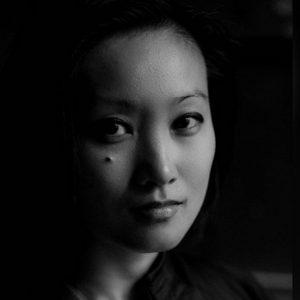Why Asian American Women In Business Need You To Not Be Passive
 It’s been well-documented that Asian American women in business are often the professional but too rarely the executive.
It’s been well-documented that Asian American women in business are often the professional but too rarely the executive.
As written in Forbes, Asian American women are the demographic group most likely to have graduate degrees but least likely to hold positions within three reporting levels of the CEO or to have line or supervisory responsibilities. Asian women outnumber Asian men among associates at U.S. law firms, but Asian men are nearly twice as likely as Asian women to be promoted to partner (64% vs. 36%).
Recently, in a national outcry against anti-Asian racism, micro-assaults, commercial discrimination and hate crimes that have risen across the pandemic, culminating in the March Atlanta shootings of eight people (six of which were women of Asian descent), nearly 1000 Asian-American business leaders have pledged $10 million to support Asian American Pacific Islander (AAPI) communities.
The Danger of the “Model Minority” Mythology
Asian American often women encounter a convoluted web of cultural myths that create a plateau in their career path. In one study of Asian American women who experienced discrimination, 34% reported that others assumed they were passive while 14% felt others viewed them as incapable of leadership.
The discrimination and bias faced by Asian Americans is often invalidated and made “invisible” due to being labeled as the model minority (due to having the highest educational achievements, highest median income, and one of the lowest crime rates) while actually being held back from the success of leadership and promotion. Not to mention blinding us to the reality that Asian-American women have been the hardest hit by Covid-19 job loss, with 44% out of work for six months or more.
The insidious impact of the harmful “model minority” mythology upon the Asian American community is that it’s both gaslighting and obscuring of the myriad discrimination and anti-Asian racism that very different groups of Asian American women actually face. Not only that, but it squeezes out room for the voices and diverse experiences of Asian Americans to be heard.
Aspects of the bamboo ceiling Asian American women confront include cultural ignorance and lack of ethnic discernment; the presumption of the perpetual foreigner; both imposed cultural stereotypes, as well as real cultural values and communication styles, that are at odds with Western masculine stereotypes of leadership; perceptions of hard working, discipline, intelligence and self-sacrificing that perpetuate an expectation of (quietly) carrying disproportionate quantities of work at a high performance standard; and racialized sexism/sexualized racism.
Yet when Asian American women do break prescriptive stereotypes to show assertiveness, they can be perceived as threatening and penalized in likability. Meanwhile, Hollywood has been no ally in challenging the stereotypes and simplistic tropes that Asian-American women are cast into, but rather reinforces them.
Speaking Up About Microaggressions
“In a workplace culture, racist acts usually play out as microaggressions—those small verbal or nonverbal slights, snubs, or insults. For example, being asked where you’re really from or being told that your English is really good assumes if you’re Asian, you’re foreign, and not a “real” American,” states Serena Fong, Vice President, Strategic Engagement, at Catalyst.
“Experiences of being invisible and forgotten surface through assumptions that because Asians are smart, quiet, and hardworking, they don’t experience racism at all,” Fong continues. “However, research shows that Asian Americans are the least likely group to be promoted to management positions, and Asian women hold the smallest share of total management positions in the US. Think about what’s conveyed when you say to an Asian colleague, particularly an Asian woman, you should “speak up more”, or “you’re so quiet”. Is that true or based on stereotypes?”
Microaggressions lower implicit self-esteem among Asian-Americans and induce stress, and when related to the “model minority” stereotype or perceived foreignness, are correlated with higher odds of poorer self-rated health. As part of AAPI Heritage month, the Los Angeles Times is currently polling to know strategies for countering microaggressions.
Fong advises, in her words, what not to do when you witness a microaggression:
- Don’t act like you didn’t hear or see it. Racism is not going to go away if we ignore it. In fact, ignoring it can be seen as tacit agreement—and this failure to address it can add insult to injury.
- Don’t make excuses. Explaining that somebody didn’t mean to be racist doesn’t make the remark or action any less hurtful or less racist. When somebody asks, “Where are you really from?” and isn’t challenged, their question reinforces stereotypes and perpetuates inaccurate information.
- Don’t become immobilized. This happens more often than not; you witness something but are at a loss for what to say or do—and end up doing nothing.
Instead, Fong recommends:
- Address the microaggression by responding with a non-judgmental observation or asking a thoughtful question. Doing so signals support for your colleagues and models inclusive behavior and courage to others. It may not be easy, but it’s worth it.
- Talk to those involved. Doing so can break down stereotypes and provide comfort and support to the targets, particularly during such a scary time in the world. Check in with your colleagues to signal that you’re open to listening without putting the burden on them. If they don’t want to talk, be okay with that.
When it comes to disrupting the conscious or unconscious, not-so-small and harmful expressions of discrimination, we are all responsible. We do not need Asian American women to learn how to “speak up more.” We all need to be brave enough to speak up and out, more.
By: Aimee Hansen









